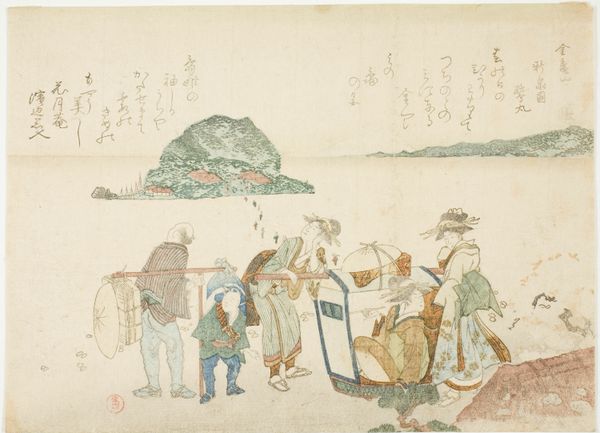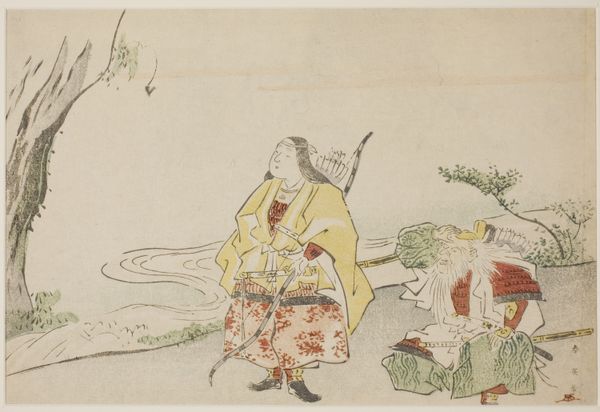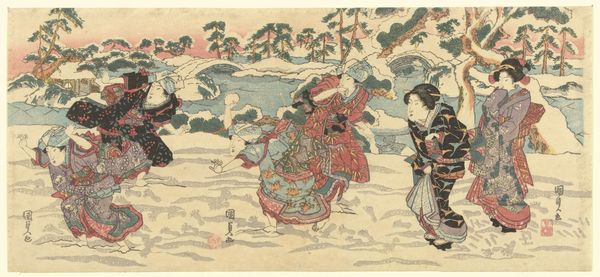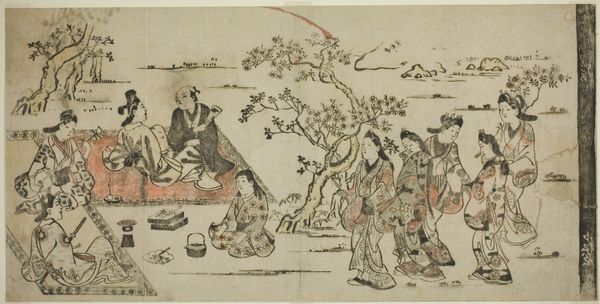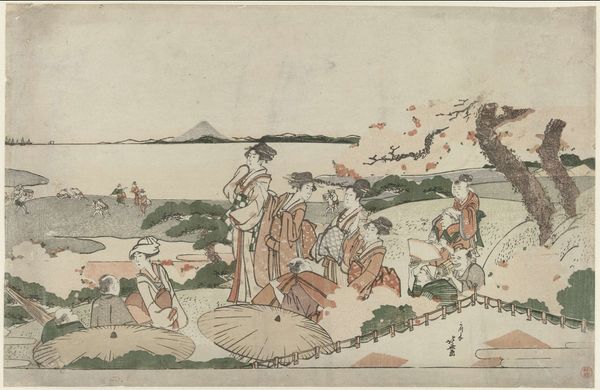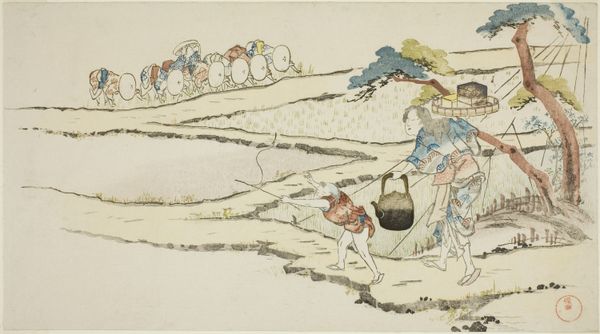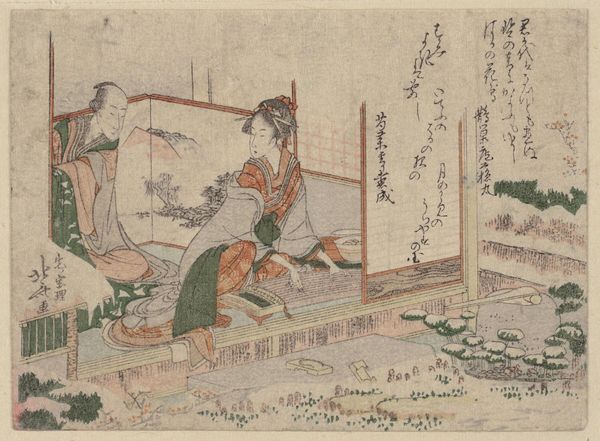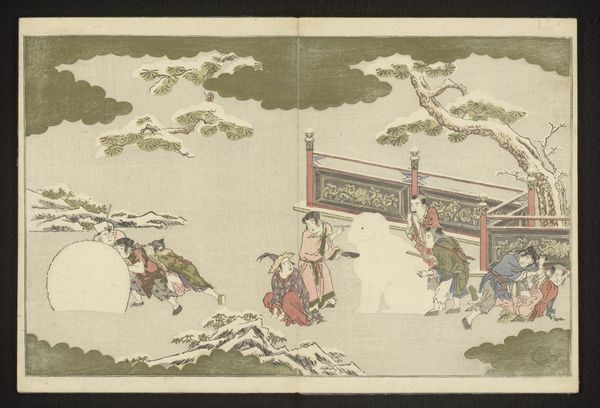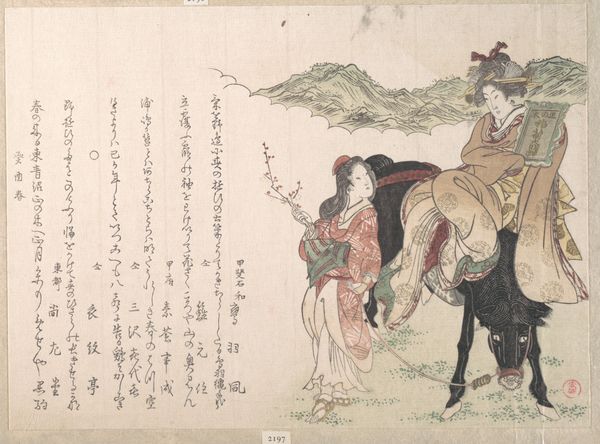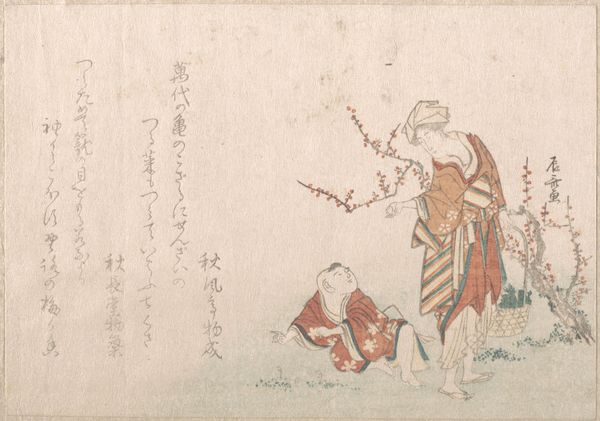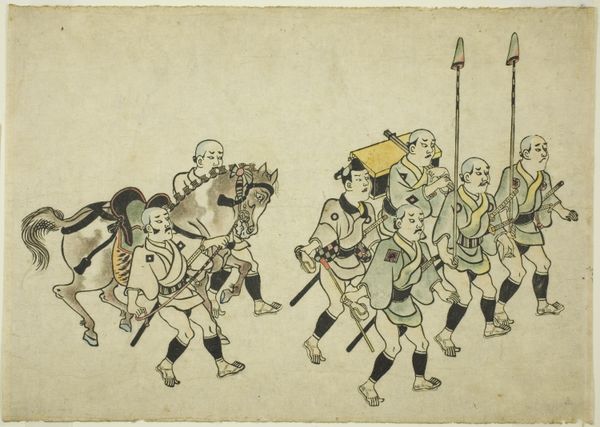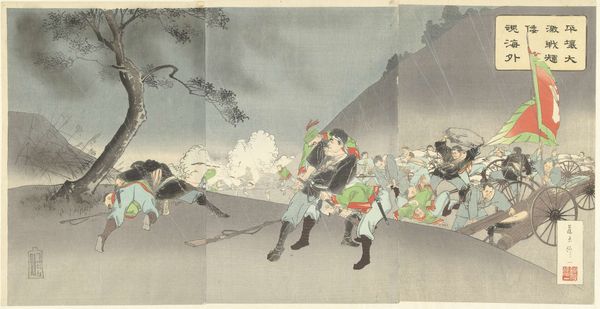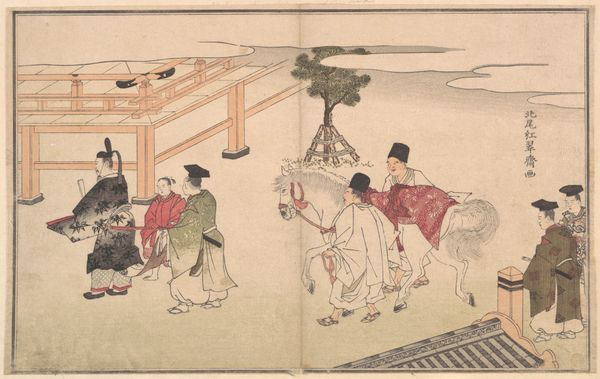
tempera, painting, hanging-scroll, ink
#
narrative-art
#
tempera
#
painting
#
asian-art
#
ukiyo-e
#
figuration
#
hanging-scroll
#
ink
Dimensions: 15 1/2 × 22 5/8 in. (39.37 × 57.47 cm) (image)51 × 27 3/8 in. (129.54 × 69.53 cm) (without roller)
Copyright: Public Domain
Kō Sūkoku painted ‘Jizō and Enma Fishing in the River,’ a Japanese artwork that reflects the syncretic beliefs of the Edo period. Here, Jizō, recognizable by his monk's attire and serene expression, is juxtaposed with Enma, the red-faced judge of the underworld, in the shared act of fishing, a symbol of sustenance and perhaps, karmic redemption. The presence of demonic figures carrying their catch suggests themes of salvation and the cyclical nature of life and death. The motif of hell and redemption is a thread that runs through various cultural tapestries. Consider the pre-Christian figures of the Grim Reaper that slowly evolved into symbols of hope rather than despair, reflecting the human desire to reconcile mortality with the promise of rebirth. The act of fishing itself, laden with anticipation and hope, acts as a psychological hook, engaging viewers on a deep, subconscious level with questions of destiny and moral reckoning. These symbols are not static but are fluid, evolving in response to the psychological needs and collective anxieties of each era.
Comments
No comments
Be the first to comment and join the conversation on the ultimate creative platform.
